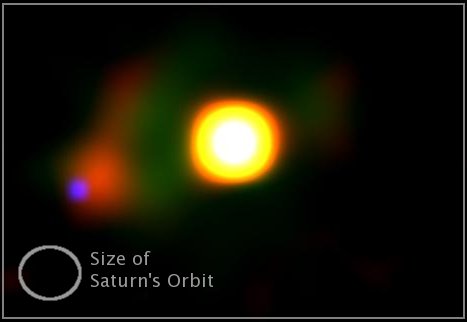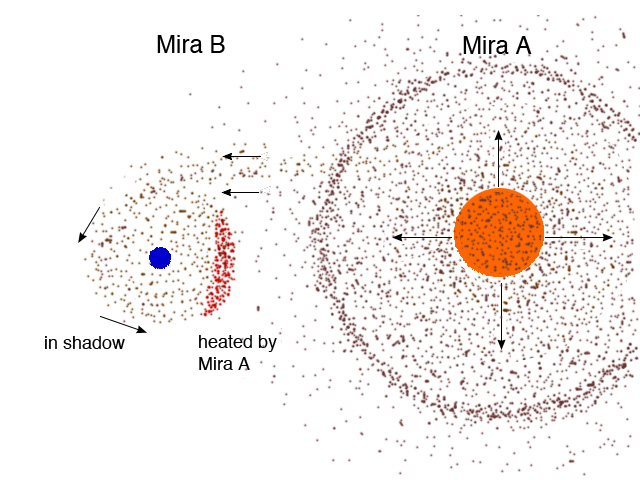These images accompany a Caltech press release released on Tuesday afternoon, January 9, 2007.
For those who attended the press talk, the slides can be found here and the quicktime animation (that will only play in powerpoint on Macs) here.

A color image of the Mira system constructed from an archival Hubble Space Telescope image (blue), a 10 micron infrared color image from the Keck and Gemini telescopes (green) and a 12.5 micron infrared color from the Keck and Gemini telescopes (red). Mira B glows blue because of the violent shock front formed as the inner part of the disk crashes into the central star. The dust outflow from Mira A has a green color because it is nearly-transparent emission from sillicate dust, and the more red color from near Mira B is due to the opaque edge of the disk being heated by Mira A.

A schematic of the Mira system, showing the outer layers of Mira A being thrown off. About 1% of this material is captured by Mira B, forming a dusty disk. It is this disk that we have detected, illuminated by radiation from Mira A.